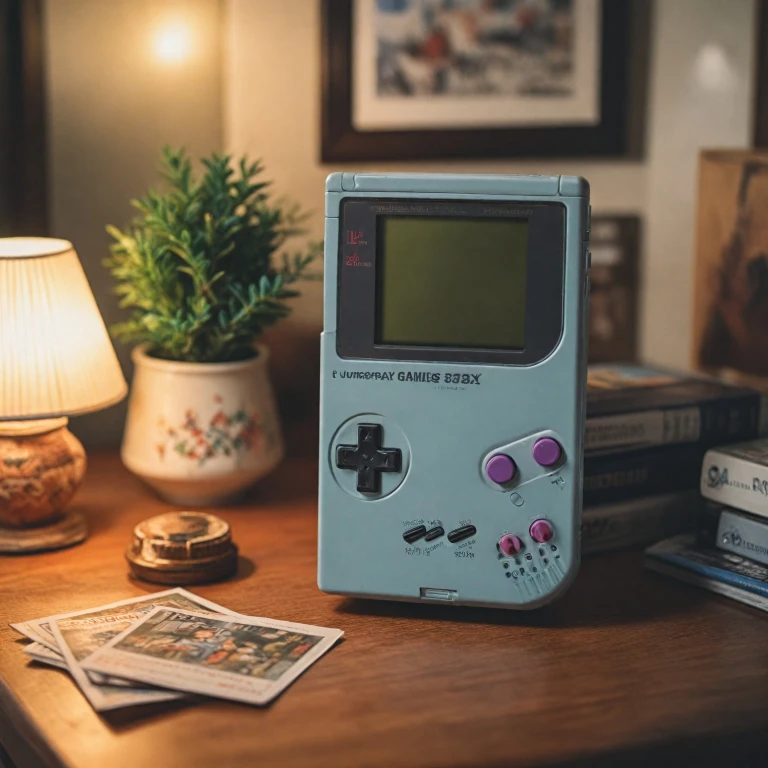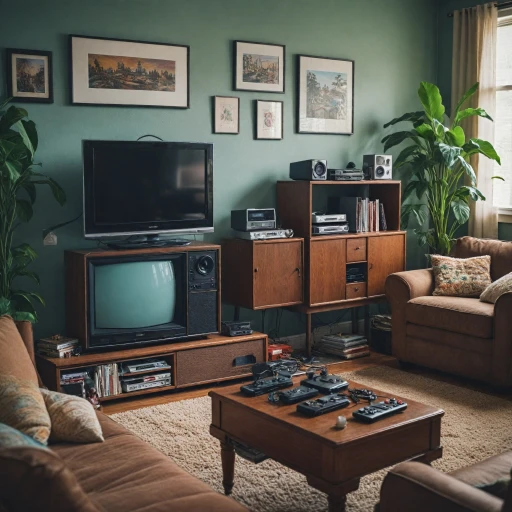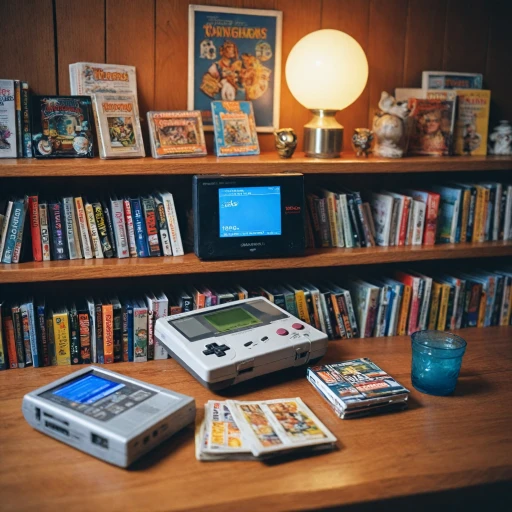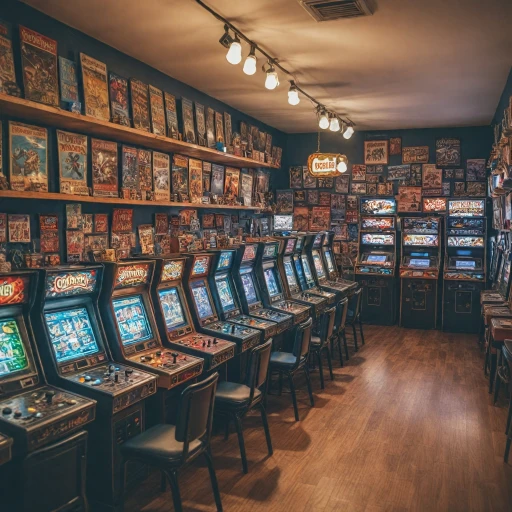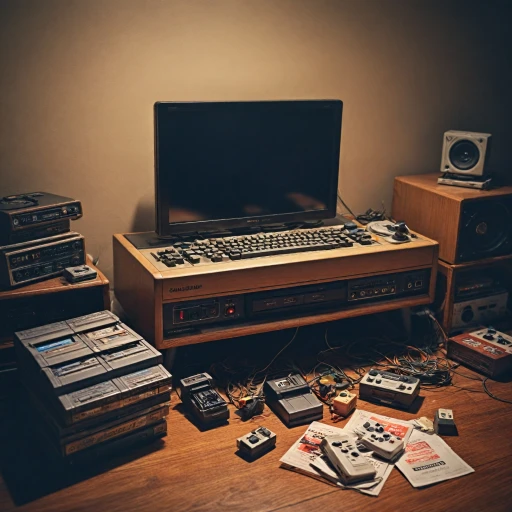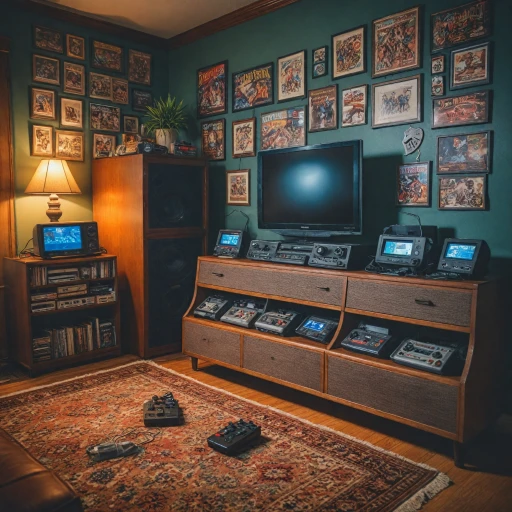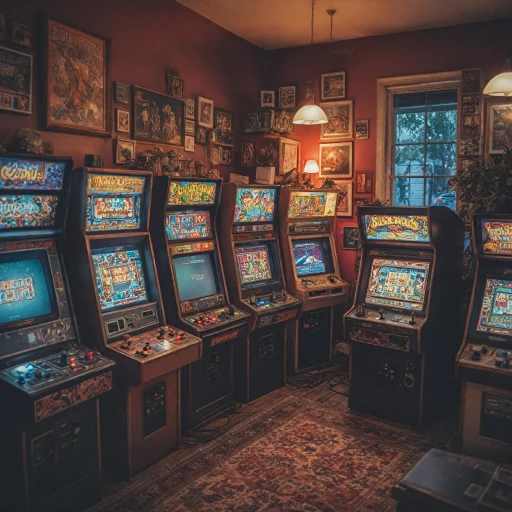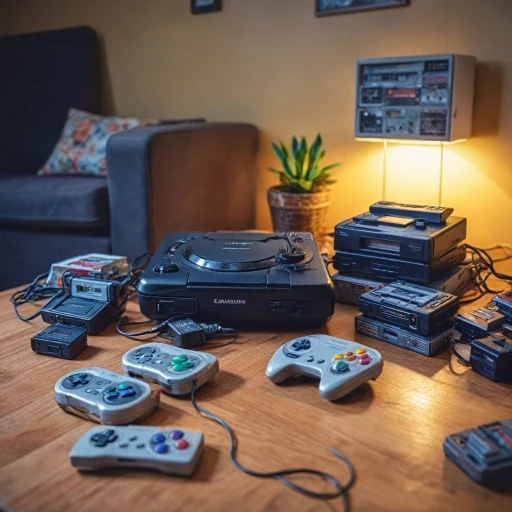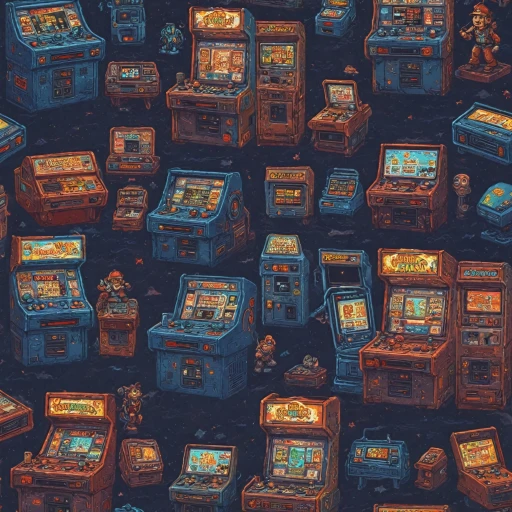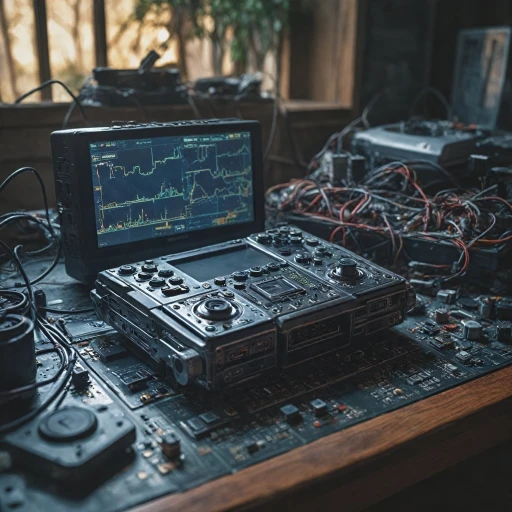
A brief history of the Game Boy Pocket
The Advent of a Gaming Icon
In the mid-1990s, the gaming landscape was dominated by bold advancements and technological shifts. Yet, one handheld console emerged, striking a balance between simplicity and innovation—the Game Boy Pocket. This iteration of the original Game Boy garnered widespread acclaim, and its appeal has endured through the decades. Released by Nintendo in 1996, the Game Boy Pocket was not just an upgrade but a reinvention of the handheld gaming experience.
The Game Boy Pocket was a response to consumer demand for a more portable version of the original Game Boy, which had already become a cultural phenomenon. This slimmed-down version retained the essence of its predecessor while introducing enhancements that would become its selling points. Amidst the vibrant gaming console market of the 90s, including the likes of the Game Gear and Neo Geo, Nintendo's decision to release the Game Boy Pocket was timely and strategic.
What set the Game Boy Pocket apart upon its launch was its compact design without compromising on gaming power. Its appeal lay in its accessibility for both seasoned gamers and newcomers alike. The system's capability to play the extensive list of Game Boy games ensured its place in gaming history as a beloved pocket-sized powerhouse.
As you explore the charm of other retro handhelds, the Game Boy Pocket stands as a testament to the enduring allure of portable gaming. The legacy of this console continues to influence modern handhelds, reminding us of the timeless joy of gaming on-the-go.
Design and features of the Game Boy Pocket
Nintendo's release of the Game Boy Pocket was a memorable moment in gaming history. This sleek iteration of the original Game Boy seemed to repurpose the essence of portable gaming while giving it a fresh, compact design. The pocket-sized marvel broke away from its hefty predecessor, designed with a practical form factor fit for any coat pocket or bag.
Andre's sleek counterpart
The Game Boy Pocket boasted several upgrades from the original Game Boy, one of the first being a more streamlined, lighter body. The new pocket console was available in various colors, such as pocket black, pocket silver, and even a translucent pocket clear, appealing to a wide range of aesthetics. While the vibrant coloring of its shells was noticeable, it was far from the rainbow power of subsequent models like the Game Boy Color or the engaging novelty of a Nintendo Switch.
Another improvement came from the screen. The Game Boy Pocket's display lacked color but featured a more helpful monochrome screen, eliminating the greenish-gray hues and affording better contrast and clarity. This enhancement was a boon for the gamer experiencing handheld games on-the-go without unwanted reflections or glare.
Performance-wise, the Game Boy Pocket worked on just two AAA batteries as opposed to the original’s four AA batteries, extending battery life and, by extension, its potential playtime. The design also featured a crisp, straightforward layout with A and B buttons, the standard Nintendo D-pad, start and select buttons, maintaining the essence of classic gaming.
The Game Boy Micro, though released much later, shares this pursuit of a compact and functional design, showcasing Nintendo's continued commitment to evolution in console design, long after the successful launch of the Game Boy Pocket.
Popular games on the Game Boy Pocket
Memorable Titles and Must-Have Games
The Game Boy Pocket, released by Nintendo, boasts a list of legendary games that have contributed to its enduring appeal. These titles were more than just games; they were experiences that defined an era for gamers. Among the most iconic offerings was the original "Pokémon Red and Blue," which transformed the landscape of portable gaming. The game's concept of capturing and battling creatures sparked a cultural phenomenon and added immense replay value, ensuring hours of engagement. Another title that held widespread popularity was "The Legend of Zelda: Link's Awakening." This game introduced intricate puzzles and a compelling narrative, pushing the boundaries of what the small screen could deliver. Its engaging storytelling and challenging gameplay set a new standard for adventure games on handheld consoles. "Tetris," with its simple yet addictive mechanics, allowed players to engage in endless hours of strategic block-stacking. It became synonymous with the Game Boy Pocket and demonstrated the power of ingeniously simple design. Many also fondly remember "Super Mario Land 2: 6 Golden Coins." This installment brought Mario's adventures to the pocket-sized screen, with colorful levels and creative enemies that kept players hooked. Similarly, "Metroid II: Return of Samus" was a standout for its complex gameplay and haunting atmosphere. This game expanded the Metroid universe, providing a compelling narrative and innovative mechanics. These games not only reinforced the Game Boy Pocket's place in gaming history but also set a precedent for future handheld consoles. For those interested in the nostalgia and charm of retro gaming, exploring these classic titles on a modern platform is an adventure worth revisiting.The cultural impact of the Game Boy Pocket
The Lasting Influence on Gaming Culture
The Game Boy Pocket, a compact marvel in the expansive universe of handheld consoles, not only echoed the ingenuity of Nintendo's original Game Boy but also carved out its distinct place in gaming culture. Released at a time when the market was predominantly fixated on home consoles, this pocket-sized device proved that portable gaming was not just a passing trend but a powerful component of the gaming tapestry. One of the most remarkable aspects of the Game Boy Pocket was its ability to democratize gaming. By offering an accessible price point when it was launched, it opened the door for a wider audience to experience the magic of handheld gaming. Unlike its technologically advanced counterparts, such as the Sega Game Gear or the Neo Geo, the simplicity of the Game Boy Pocket's design and features emphasized accessibility over complexity. Furthermore, the Game Boy Pocket's monochrome screen might have seemed limited when contrasted with the colored displays of more opulent systems, but its practicality and battery-efficient design resonated with gamers seeking long-lasting playtime. It was through this monochromatic lens that iconic titles like Pokémon Red and Blue painted vivid worlds in the minds of players, proving that a great game doesn't require a spectrum of colors to captivate. In terms of cultural impact, the Game Boy Pocket went beyond just being a gaming device; it became a staple of childhood and a status symbol. The variety of colors available, such as pocket silver, pocket red, and pocket blue, along with limited editions like the pocket clear and pocket black, allowed owners to express their personalities through their choice of console. When comparing this revered console to current handheld innovations like the Nintendo Switch, it's important to consider the Game Boy Pocket's legacy. While today's devices offer advanced graphics and processing power, the nostalgia and straightforward joy found in a Game Boy game still hold a special allure for many enthusiasts. Ultimately, the cultural impact of the Game Boy Pocket is seen not just in its past successes, but also in how it set the stage for future handheld systems, including the Game Boy Color and the Game Boy Advance. By fostering a global community of gamers united by the love of these pocket-sized adventures, the Game Boy Pocket solidified its enduring charm within the vast pantheon of gaming history.Comparing the Game Boy Pocket to modern handheld consoles
How Does Game Boy Pocket Compare to Today's Handheld Consoles?
The Game Boy Pocket stands as a relic from a simpler time, yet its design and gaming experience still captivate many. When comparing it to modern handheld consoles like the Nintendo Switch or the more recent colored console iterations, the differences are both striking and intriguing. Firstly, the Game Boy Pocket, with its monophonic screen and limited color palette, seems primitive in the face of today's high-resolution, full-color displays. Contemporary consoles, such as the Switch, offer vibrant screens with touchscreen capabilities, far surpassing the original display power of the Game Boy Pocket. The buttons on the Game Boy Pocket, which include just a few dedicated to gameplay and navigation, underscore its straightforward design. In contrast, modern handhelds boast complex control systems, sometimes even integrating motion sensors and other advanced features. Despite its basic design, the Game Boy Pocket was crucial during its release launch, influencing the design ethos of future handhelds. The size, weight, and compact nature of the pocket-sized silver or red versions embodied the ethos of a portable gaming experience that remains a trend even in today's market. In terms of game libraries, the Game Boy Pocket offered a robust list, featuring iconic games that are still cherished. Modern systems, on the other hand, boast expansive libraries, including both digital and physical copies, to cater to diverse preferences. However, it's important to note that some retro enthusiasts still find great joy in collecting and playing original Game Boy favorites. The simplicity and limited functionality of the Game Boy Pocket are part of its charm and cultural impact. Modern consoles such as the Neo Geo and advancements like the Nintendo Switch have redefined what handheld gaming can be, but the Game Boy Pocket remains a nostalgic cornerstone, reminding gamers of a bygone era of simplicity and innovation.Collecting and preserving the Game Boy Pocket
Preserving the Legacy and Building Your Collection
For collectors and enthusiasts, the Game Boy Pocket remains a cherished piece of gaming history. As one of Nintendo's most compact systems, its appeal lies not only in its nostalgic value but also in its design and functionality, distinct from the original Game Boy and pre-dating the vibrant Game Boy Color era.- Diversity of Colors: Available in an array of colors such as pocket silver, pocket red, and pocket blue, the Game Boy Pocket offers a unique collecting experience. Each color becomes a coveted item, whether aiming for the entire spectrum or selecting specific variations to suit personal tastes.
- Rarity and Condition: The price of a Game Boy Pocket can vary significantly. Rare editions, especially from earlier production runs or those maintained in mint condition, may fetch higher prices. For casual hobbyists and serious collectors alike, it's essential to verify authenticity and condition before purchasing.
- Game Library and Compatibility: Boasting a rich list of games, many originally released on the Game Boy, the gaming library offers a diverse gaming experience. Game Boy Pocket is compatible with the robust selection of original Game Boy games, providing the freedom to explore a multitude of genres and titles.
- Preservation Tips: To ensure longevity, keep the console in a safe, dust-free environment. Avoid prolonged exposure to direct sunlight, which can discolor the console and fade its colors. Modern reproduction displays can be gentler on the eye than the original screens designed at the time.
